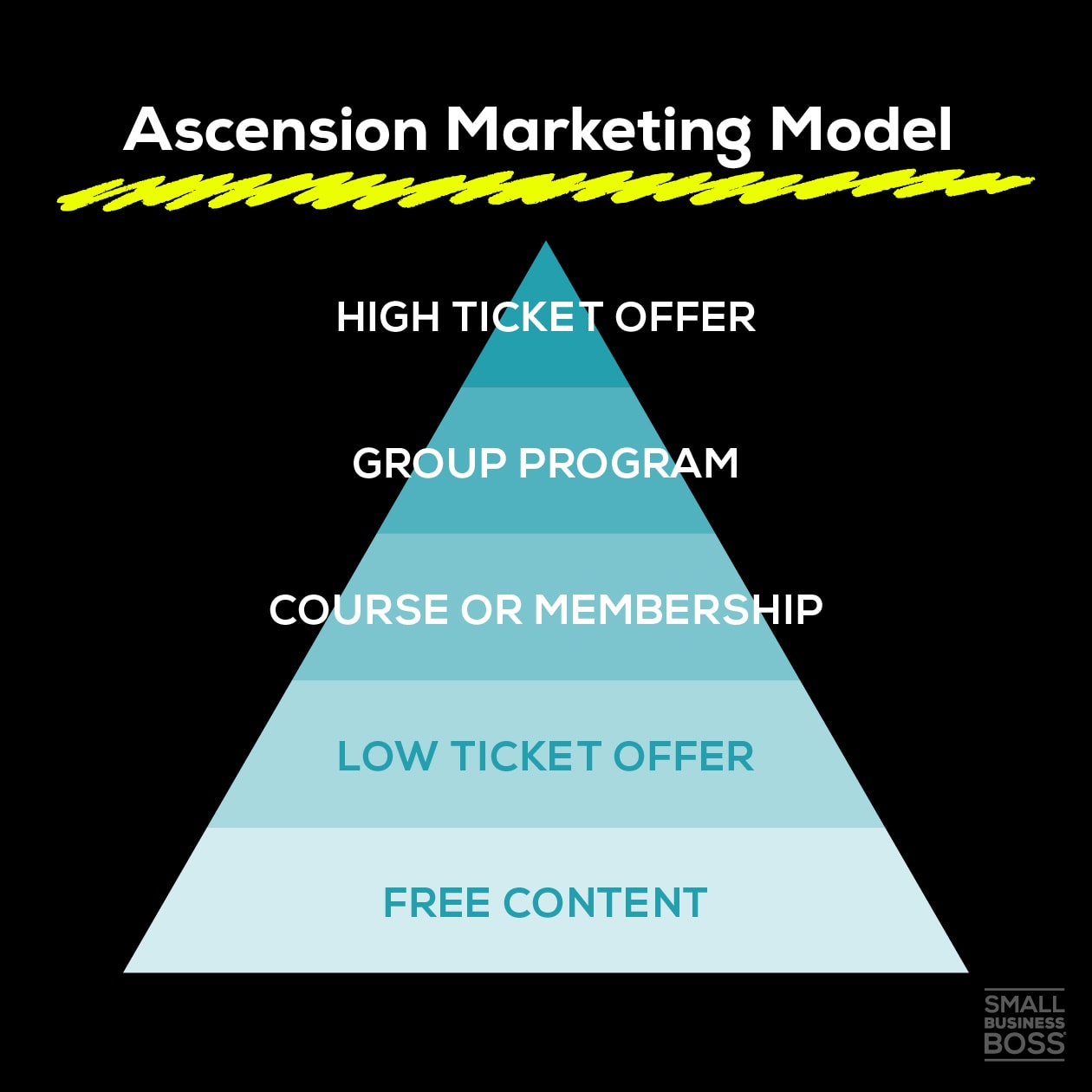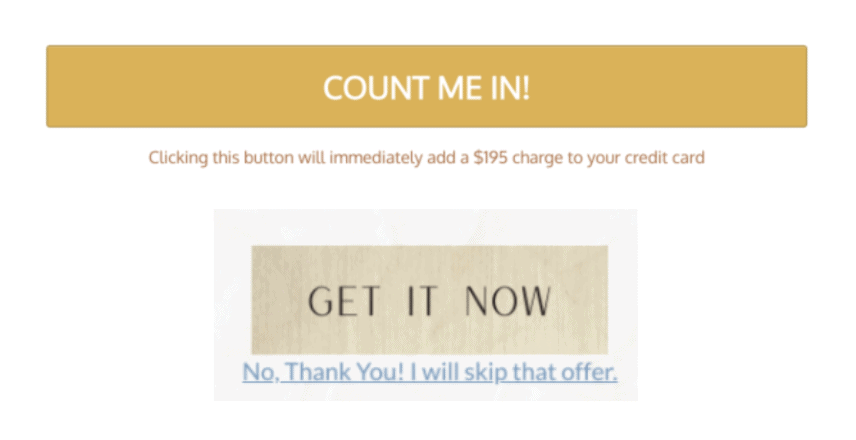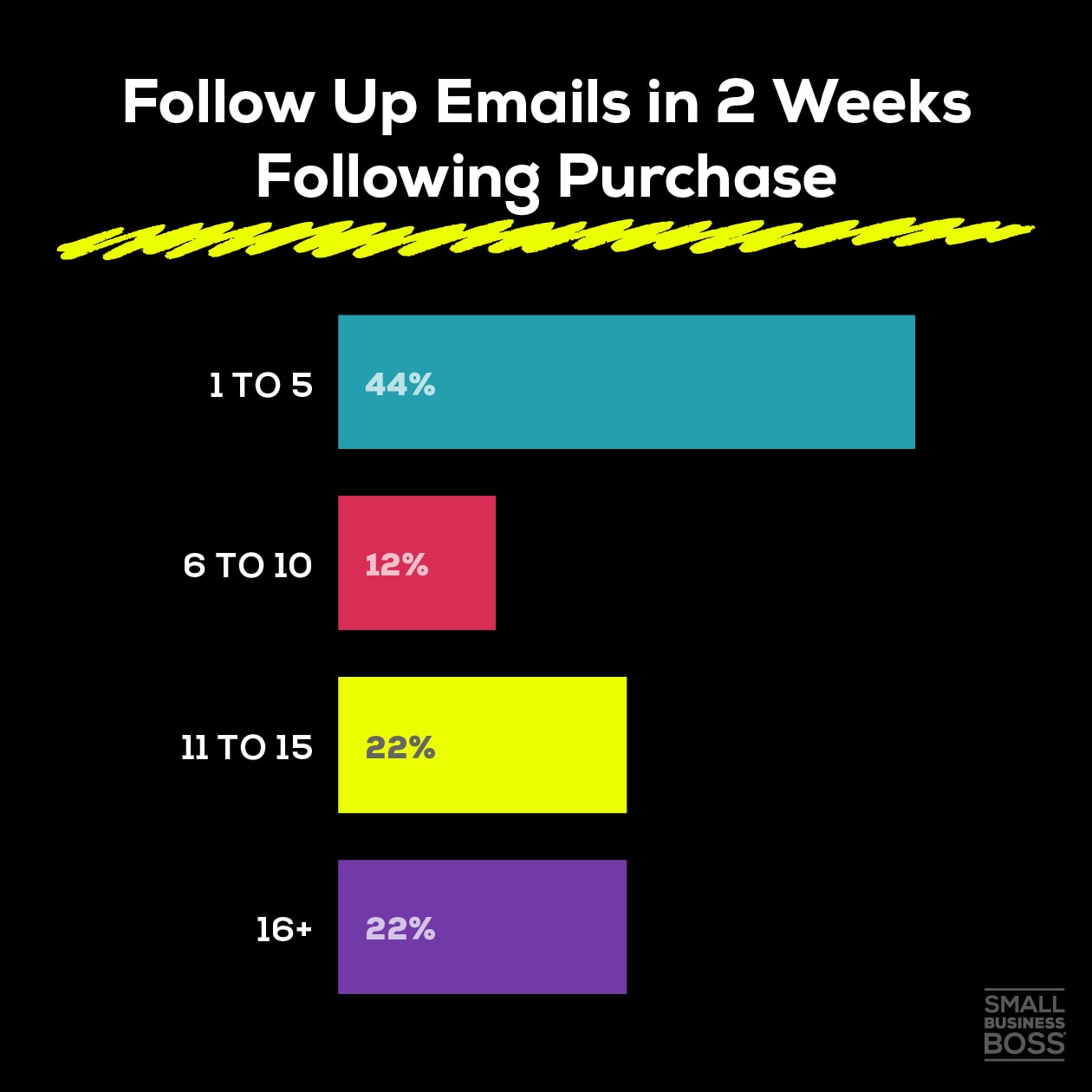I Spent $285 on Low Cost Offers So You Don’t Have To
Here’s What You Need to Know
By Maggie Patterson
All opinions in this post are my opinions and mine alone.
Listen Now To This Essay On The BS-Free Service Business Show
If you’ve spent a hot minute in the online business world, you’ve probably been targeted with a Facebook or Instagram ad selling you a low-cost offer of some type. The price point of these offers makes them enticing as they’re relatively low risk.
In this episode and essay, I’m sharing my findings from an analysis I did after spending $285 on nine of these low-ticket offers. I’m doing the work so you don’t have to and then sharing what you need to know.
Rules of Engagement for This Analysis
That’s where my analysis comes in. I was inspired to do this after having someone I bought a low-ticket product from a year ago pop back into my inbox with the hard pitch. (I was extra curious as I had definitely unsubscribed, but since returning to my inbox a month ago, I’ve received 25 emails.)
Plus, when the Trust-First Pricing Principles essay and podcast episode went live, I had a lot of questions about why I labeled these low-cost offers as a “tricky” pricing tactic.
Before we dive into my findings, let’s talk about the rules of engagement for this analysis:
- All products were purchased from a Facebook or Instagram ad between August 20 and 27, 2021.
- All steps of the process from the ads to the sales page to the upsell offers had to be documented via screenshots.
- All emails after purchase were saved for a period of two weeks.
- I only purchased products that are relevant to my business.
- I couldn’t have a relationship with the person making the offer.
Ultimately, I purchased a total of nine products, spending a total of $285 USD, with products ranging in price from $7 to $47.
The products were focused on a variety of topics including social media, client attraction, email copywriting, and goal setting. I will not be naming the products used or the creators as I want to focus more on what we can learn from these offers than the distraction of naming people using these tactics. As always, my goal is to critique business practices, not any one person’s character.
The analysis of these products is limited to the sales/marketing ecosystem around these offers. Evaluating the quality of these products is beyond the scope of this project.
Here’s what I uncovered and what we can learn from every step of their marketing/sales process.
Facebook Ads
Let’s start at the beginning with a quick review of Facebook and Instagram ads. For this part of the analysis, I looked at three main factors.
First, I checked all of the ads to ensure they were transparent with their pricing. 100% of these offers included clear, easy-to-understand pricing in their ads.
Then, I looked at three key areas to assess the “hype factor” of these ads:
- Income Claim Marketing: Did they use claims of their income or clients' income as part of the ad?
- Big Promises: Did they make big promises about what the product could do for you if you purchased it?
- Personal Story: Did they share a personal story?
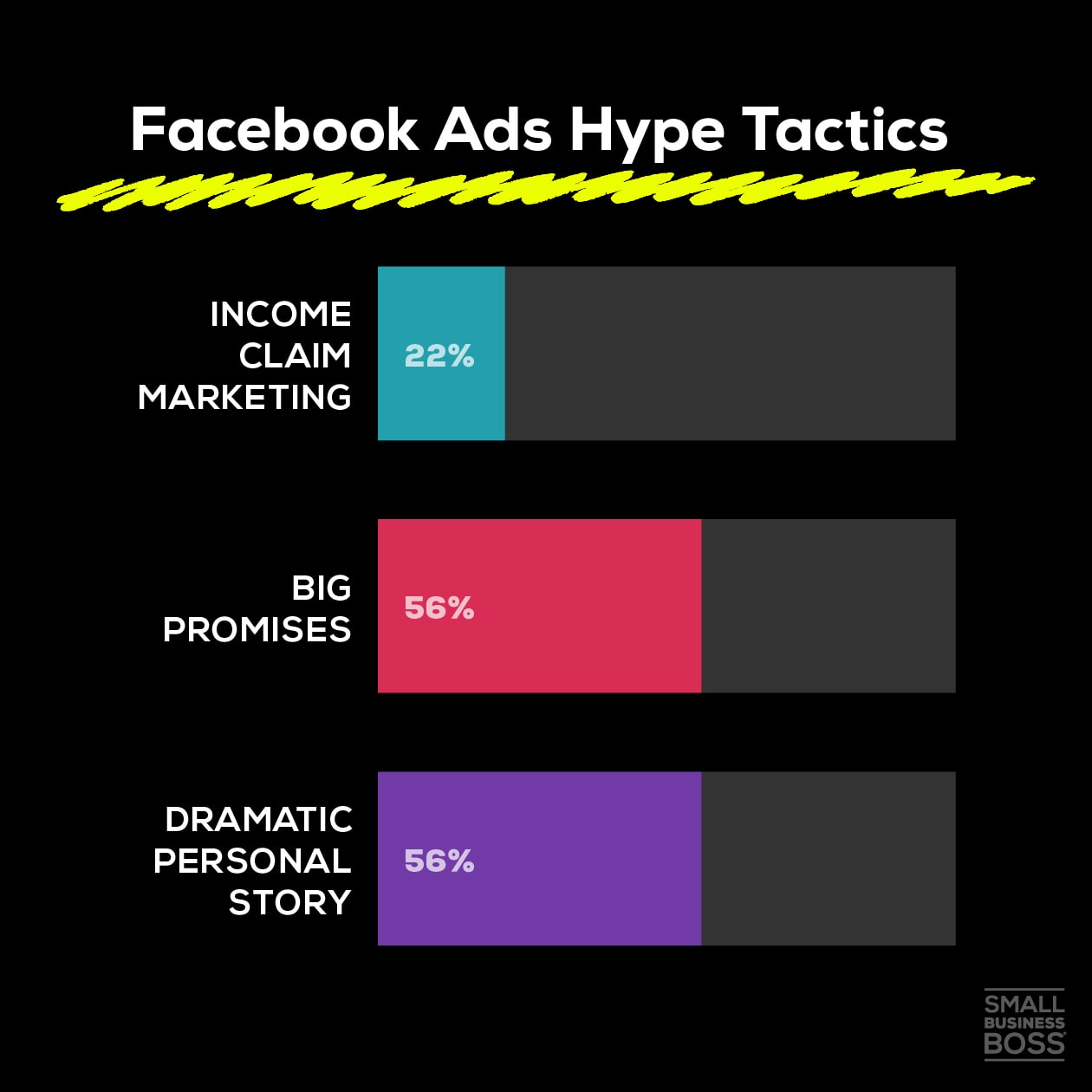
Only 22% used income claim marketing, 56% big promises, and 56% personal stories.
Overall, the hype factor of these ads was pretty low. That's likely the result of Facebook policies around what claims you can make in an ad.
However, the level of hype rises substantially once we look at the sales pages for these offers.
Sales Pages: Hype Factor

To do this analysis, I read each one of these sales pages multiple times, which was no small feat as some of them were over 20 pages once saved as a PDF.
I looked at two main things on the sales pages: the hype factor, and the overall messaging.
For the hype factor I examined three slightly different factors than the ads:
- Income Claim Marketing: Did they use claims of their income, or clients income as part of the ad?
- 1% Testimonials: Did they use results not typical testimonials?
- Personal Story: Did they share a personal story?
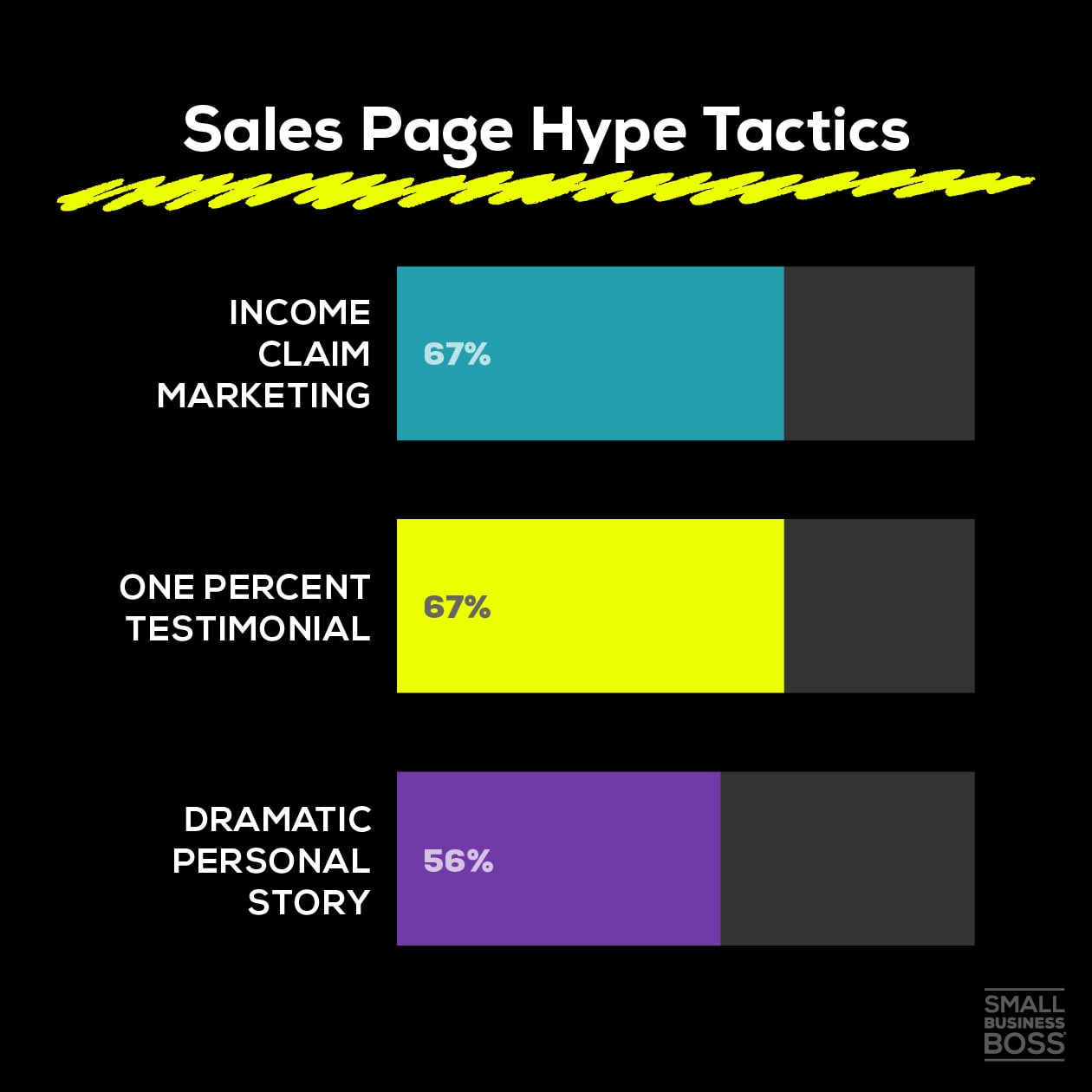
This is where things get interesting. 67% of these offers relied on income claim marketing to sell their offer. While 67% of them used testimonials that shared results that were clearly unrealistic for the majority of customers.
About half of these sales pages (56%) featured dramatic personal stories. These were mostly in the rags to riches category of celebrity entrepreneur storytelling, with an emphasis on the point that “I did it and you can too”.
This type of storytelling is par for the course in online business, but it’s so overdone. When you rely on dramatic (or even traumatic) storytelling, you’re going to sound like everyone else and you’re doing little to build lasting trust.
The other part of the sales page analysis I did was focused on the messaging. As a communications professional, messaging is a big part of the beef I have with the current state of online business. The messages all sound the same and rely on a few tired tropes to sell their offers.
I was on the lookout for four specific types of messages on these sales pages:
- Secret or Method Focused Messaging: Did the page include messaging focused on selling you a specific secret or method?
- Client Attraction Messaging: Did the sales page focus on attracting clients so you can make more money?
- High Level or High Ticket Messaging: Did the message concentrate on messaging related to high-level or high ticket offers or clients?
- Scale/Growth Messaging: Did the sales page include messaging on scale or business growth?

First, let’s look at scale/growth messaging as 89% of the sales pages included in this analysis shared this message. The relentless focus on scaling your business is seen as one of the only ways to get people’s attention as it’s believed by celebrity entrepreneurs that everyone’s goal is always to make more money.
The other message that was found on the majority of the sales pages was around client attraction, coming in at 67%. Honestly, I hate this message.
The idea that you simply "attract" clients turns a process that requires effort and a plan into a magical act so people can sell you their secrets.
Speaking of secrets, I was pleasantly surprised to see that only 44% of these pages included messaging about selling you their secret system. The focus on secrets is a continued problem in this industry as I share in my essay, The Dark Side of Online Business.
Finally, just under half of these offers shared messaging using “high level” or “high ticket” (44%) which I found fascinating, as this is a clear bid to play off the industry fixation on high-end clients and high-ticket offers.
I plan to talk more about high ticket pricing but from a messaging point of view, but this strikes me as seriously overpromising. It’s not realistic to expect that you’ll learn how to book high ticket clients from a $27 product.
Upsells: But Wait
There’s More!
After the order bump offer, the majority of these products - 89% in fact - provided an opportunity to supplement your purchase with an upsell.
In some cases, these upsells made perfect sense and in others, they were confusing as hell. They were tangentially related at best, and trapped you in a web of offers.
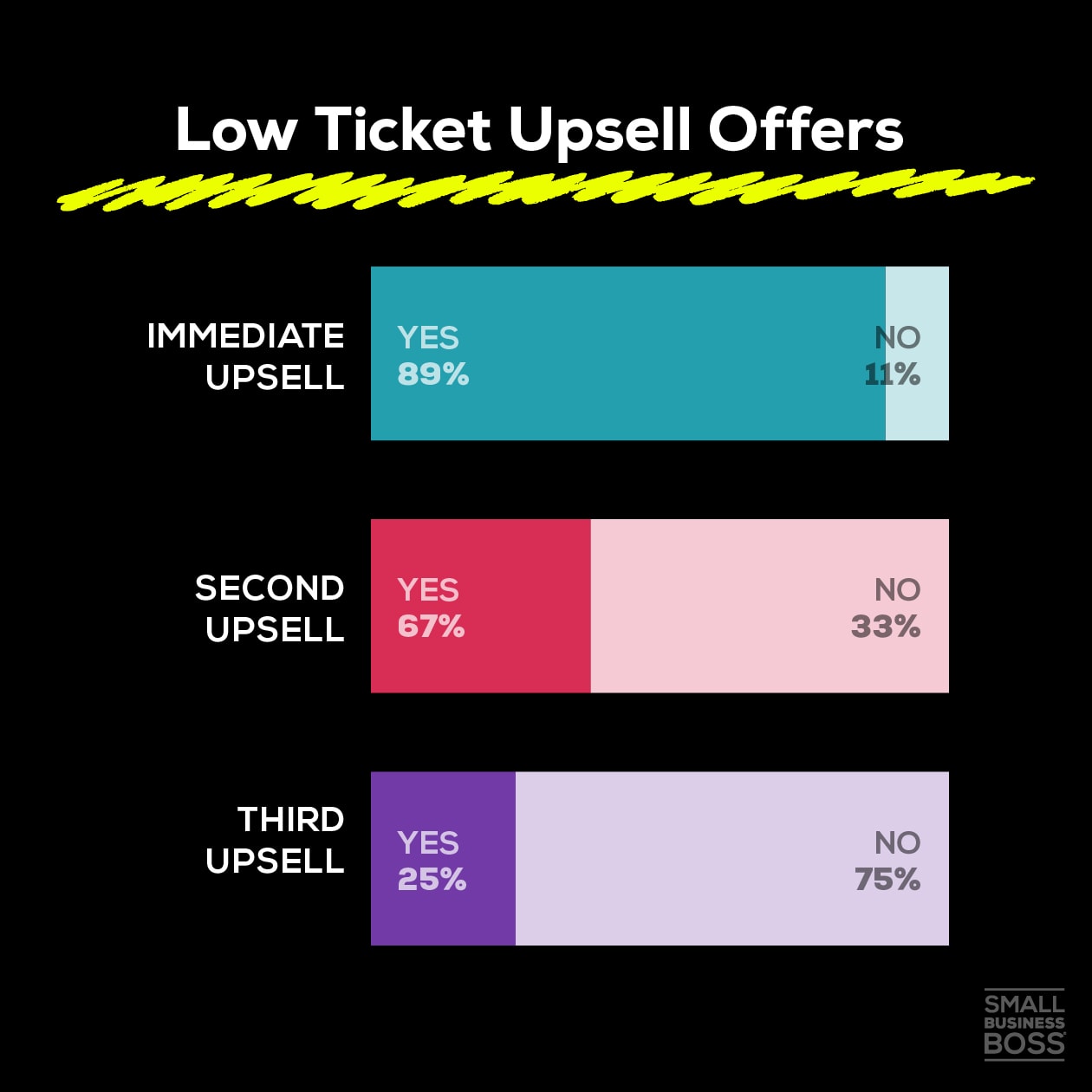
At this point in the sales process, you’ve been through the process of going from the ad to the sales page to the checkout page plus the order bump, and now you’re confronted with another offer.
Your defenses may be down, and you’re easily enticed by big promises.
Let’s say you decline the first upsell, you may be confronted with further upsells: 38% of these offers had a second upsell, and 25% had a third offer.
The pricing of the upsells ranged as follows:
- First Upsell - $37 to $297
- Second Upsell - $27 to $197
- Third Upsell - $97 to $197
Ask any bro marketer (remember they don’t need to be a bro) and they’ll tell you that the real money for their low ticket offers comes on the back end of the funnel.
The thinking is that only 10 to 20% of your customers may buy the upsell, but if you put enough people through the sales process, you’ll make exponentially more money.
The Low Ticket Offer Ecosystem: What Can
We Learn?
The entire point of this analysis was to break down the ecosystem around these low-ticket, loss leader-style offers.
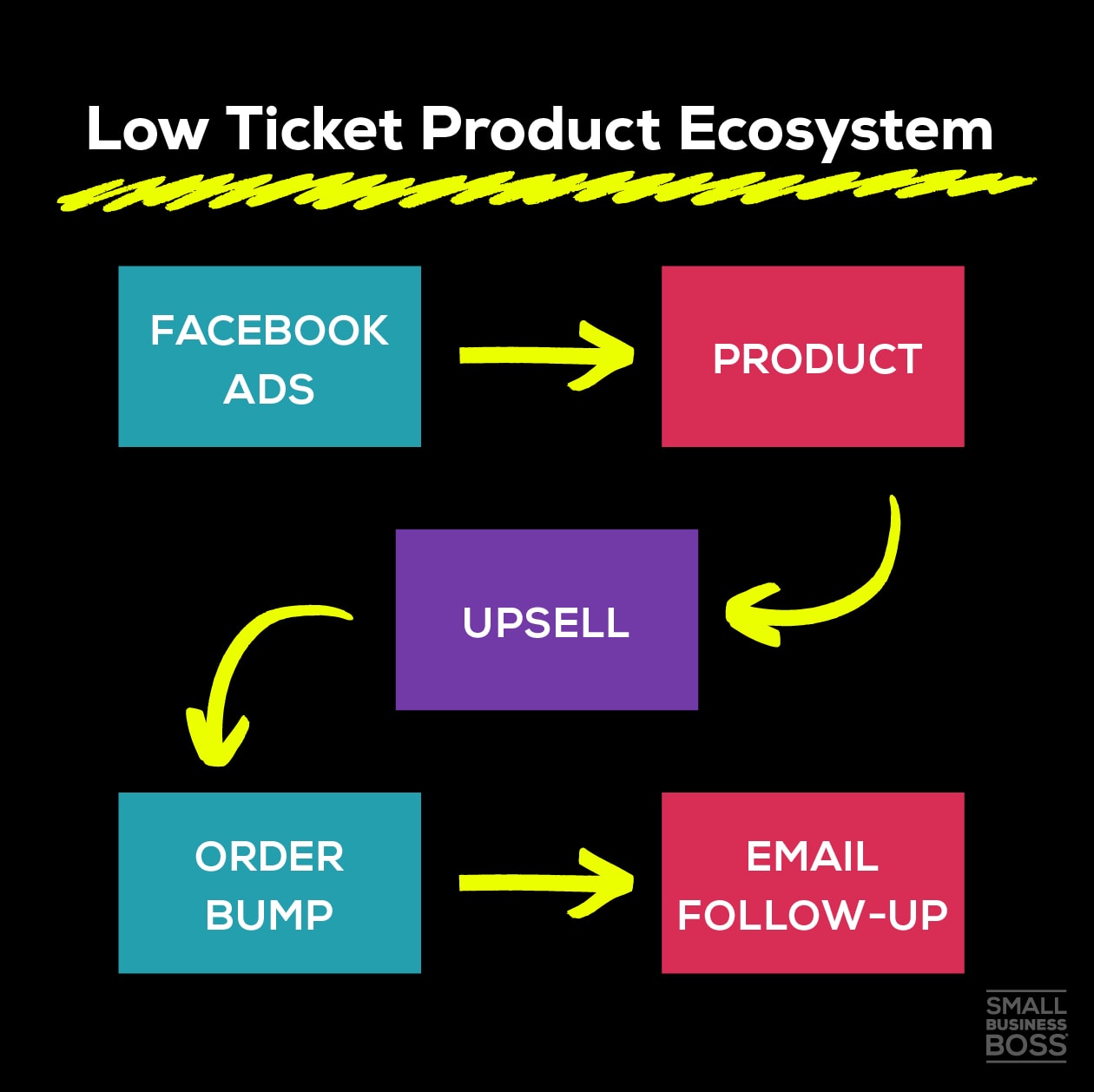
As detailed above, it’s a mixed bag of shady and shifty tactics which we need to be aware of as consumers, and consider carefully as business owners. Every step of the way there are countless tricks and tactics used in order to make the sale.
As Consumers: Let the Buyer Beware
Most of us aren’t just business owners, but the target market for these low ticket offers, so there’s an element of let the buyer beware based on this analysis.
This ecosystem is designed to extract money from us quickly using a series of hyped-up promises and fear-based marketing tactics.
Before you decide to buy a low-cost offer, consider the following questions to identify potential red flags:
- Does this offer make realistic or hyped-up promises?
- Does it rely on income claim marketing or dramatic storytelling?
- Is the offer clear and what’s included is transparent?
- Is the checkout page clear and does it include a confusing order bump?
- If there’s an upsell, can you easily opt out?
- With the follow-up emails are they pushing you to buy more?
The price point of these products means they're often an impulse purchase and is driven by urgency, value, and excitement. The same way you may strive to stick to your grocery list, look at why you may find these offers appealing, and how you may need to have guardrails in place to ensure you're not buying them in the heat of the moment.
While the price point may make it low risk on the surface, the order bumps and upsells can easily take a $37 purchase and turn it into a much, much bigger one with greater financial consequences.
The Verdict: Save Yourself and Your Money

Where does that leave us after this analysis of these products? My take on low ticket offers is that despite how exciting it can be to purchase a product in the heat of the moment, we should proceed with caution.
The ecosystem built around these offers is designed to play us on multiple fronts. As consumers, it’s designed to get and keep us in the funnel. While we have agency when deciding if we get into that funnel in the first place, once we’re in, there’s a high degree of manipulation being used to keep us there.
It’s worth noting, that many of these products featured “sales psychology” as part of the offer, which means their creators are well-versed in tricks and tactics designed to keep you buying. The field of sales psychology is a legitimate and valuable one, but in the online business world, it’s often shorthand for how to use fear, scarcity, shame, and manipulation to make sales.
That’s at the heart of many of these offers, so we need to be wise to how these seemingly harmless offers can go seriously wrong.
